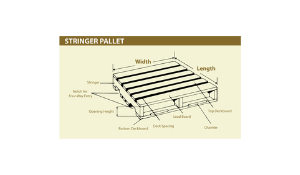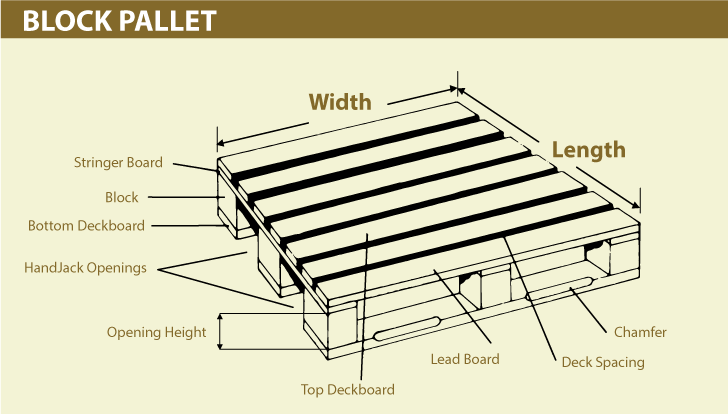All About Different Types of Pallets
18 July 2014

Common Pallets and How They Come in Handy
Pallets aren’t just pieces of wood nailed together, they are a critical element of your product packaging and logistics.
-
Pallets allow a company to use air space in addition to floor space, reducing warehousing costs.
-
Pallets reduce handling time with a savings in man hours and a decrease in overtime wages.
-
Damage to goods may be totally eliminated with the installation of a palletization program.
-
Savings from palletization average from 40 to 45 percent, with a range between 25 percent and as high as 80 percent.
-
Mechanical material handling helps to cut down on personnel accidents often found with manual handling and lifting.
-
Pilferage is reduced when individual items are strapped or wrapped to pallets in unitized bonded loads.
-
The stringer pallet is the most commonly used pallet in the United States, with the most common size being 48 x 40″. The Grocery Manufacturer Association (GMA) has created a standard 48 x 40 hardwood stringer pallet specification that is used widely for many consumer products.
Stringer Pallet
A stringer pallet is called that because it uses “stringers,” which support the unit load. The stringers are the boards, typically 2 x 4’s or 3 x 4’s, sandwiched between the top and bottom deck boards.
When specifying a stringer pallet, the length (i.e. the length of the stringer) is noted first, and the width, or length of the deckboards is noted second. Frequently, stringers may be notched to allow for partial four-way fork entry, thus creating a “4-way” stringer pallet. If the stringers are not notched, it is called a “2-way” pallet, with fork entry only from either end. Bottom deckboards can be chamfered to allow entry for the wheels of a pallet jack.
» Read More Why Wood Pallets Are Preferable

A stringer pallet with no bottom deck boards is called a skid.
Block Pallets
Block pallets are true 4-way entry pallets. They use blocks of solid wood, plywood, or plastic to support the unit load. Typically, block pallets use 4 to 12 blocks to support the top deckboards. Curiously enough, between the blocks and the deckboards are thin stringers, which form a mat with the deckboard. Like in a stringer pallet, the length of a block pallet, is specified by the length of the stringer board and the width by the length of the deckboards. Block pallets can be designed with or without bottom deckboards, or a full-perimeter base.

Both stringer and block pallets can have a variety of deckboard configurations, number, width, and spacing. In addition, plywood or oriented strand board (OSB) can be used as deck material, otherwise known as a “panel deck” pallet.
In special cases, certain types of synthetic foam can replace stringers or blocks. These are frequently called “floater pallets,” and are used to cushion the unit load.
{{cta(’22d43021-d043-4fa9-a54f-b32c02e1080c’)}}
